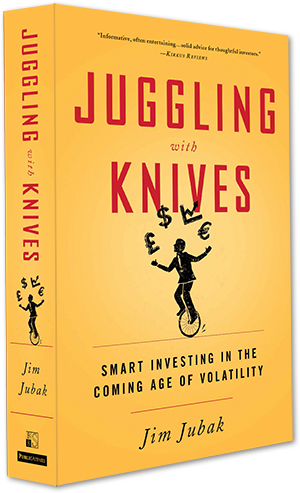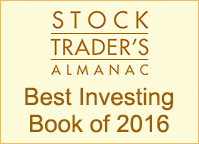It’s not like there isn’t any volatility in the financial markets, ya know.
The Federal Reserve is about to raise interest rates for the first time in 2016. The euro is tanking. The Italian government just collapsed. Oil prices have rallied on an OPEC production deal nobody really trusts. And the President-elect has managed to rile and/or confuse China and a good bit of the rest of the world–including the leaders of his own party who aren’t sure what to make of his call for a 35% tariff that could well set off a trade war.
Yet with all of this, the Chicago Board Options Exchange S&P 500 Volatility Index (VIX) continues to drop lower almost every day. It closed today at 11.79, down another 2.88% on the day. The 52-week low at 11.02, set back in August when it looked like the much more predictable Hillary Clinton was going to win the Presidential election, is just a tad lower than today’s level.
The VIX measures how much investors and traders are willing to pay for options to hedge against a drop in the S&P 500. So right now it’s safe to say no one is thinks it’s worth very much to pay up for that protection.
Why not? And what does the reason tell you about when (or if) you might want to buy options on the VIX or put some money into an ETF like the ProShares Ultra Vix Short Term Futures ETF (UVXY) in order to profit when the volatility trend turns?
I think the simple reason the VIX is so low is that this index reflects not volatility in the financial markets but volatility in U.S. stocks. And right now, while there’s a lot of volatility in the financial markets it’s all concentrated in the bond and currency markets. And not in the U.S. stock market. At the moment, I’d say in fact that no one is especially worried about U.S. stocks. They are, in fact, the asset that everyone thinks they should be buying right now.
Look at bonds in November. The Bloomberg Barclays Global Aggregate Total Return Index lost 4% in November. That’s the worst performance for this bond index since its beginning in 1990. Global bonds have lost $2.8 trillion (yep, with a “T”) in the last two months.
But they’ve lost it because of news that for the most part bodes well for stocks. The new Trump administration is going to propose a $1 trillion package to build infrastructure–that will stimulate the economy and modestly increase inflation. The new administration has also proposed a huge tax cut, which should also stimulate growth and increase inflation. Faster growth is good for stocks as is moderate inflation (since it let’s companies raise prices.) A single interest rate increase by the Fed, which is all we’re looking at right now, won’t hurt economic growth significantly (U.S. central bankers hope) and it’s even good for earnings in the financial sector.
No wonder that while bonds have slumped, stocks have climbed with the S&P 500 up 3.79% as of the close today December 6 and with that index and the Dow Industrials hitting new record highs just about every day. The Dow Jones Industrial Average, in fact, set another new record high today.
See any reason there to hedge U.S. equity positions?
Or how about looking at the dollar and currency markets if you’re looking for volatility and hedges?
The Fed’s trade-weighted dollar index rose climbed 3.9% from November 8 to November 29. That has raised the cost to investors in the yen and euro, who want to hedge against a further rise in the dollar. And this doesn’t look to get better with some investment houses predicting a dollar shortage in Asia (which means higher prices for the dollar) in 2017.
Traders don’t have to wait for volatility in the bond and currency markets to fall in order to see volatility for stocks climb. In fact, at some point volatility in bond and currency markets is likely to lead to an increase in volatility in stocks. A stronger dollar, for example, isn’t good for U.S. stocks if it gets so strong that it cuts into earnings. Higher interest rates, which produce falling bond prices, aren’t good for stocks at some level either because they raise borrowing costs and slow growth in the economy.
But as long as traders and investors see putting money into U.S. stocks as a way to escape falling bond prices and as a way to participate in a rising dollar, it’s unlikely we’ll see a significant pick up in volatility as measured by the VIX.
I don’t see the VIX falling a lot further at this point but the index is likely to remain resistant to events that might otherwise cause a pickup in stock market volatility for a while. (This is, of course, absent some geopolitical mis-step that creates a real global crisis.)
I do see that changing once Donald Trump goes from being President-elect to President. At that point he will have to deal with the reality of Congressional politics that won’t always give him what he wants on the budget, on taxes, on infrastructure, and on trade. Turning vague proposals into real numbers will itself make financial markets–including the stock market–more nervous. We’ll go from “Gee, it’s great that we’re going to put $1 trillion into infrastructure” to “I’m worried that this plan won’t make it through Congress,” and we’ll go from relief that the Federal Reserve thinks the economy is strong enough to take an interest rate hike in December to wondering how many times the Fed might raise interest rates in 2017 and thinking about the dangers of a global recession and trade wars.
My best estimate at this point is that you don’t risk seeing volatility sink a whole lot further at this point, but that you won’t make much money on volatility either (absent an unpredictable geopolitical event) until some time in early 2017. I’d peg February or March as a reasonable schedule. Betting on rising volatility right now isn’t wrong; it’s just early. In my opinion.




